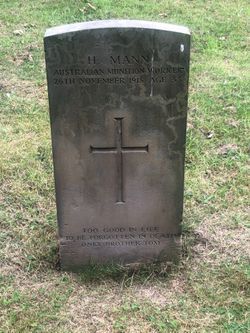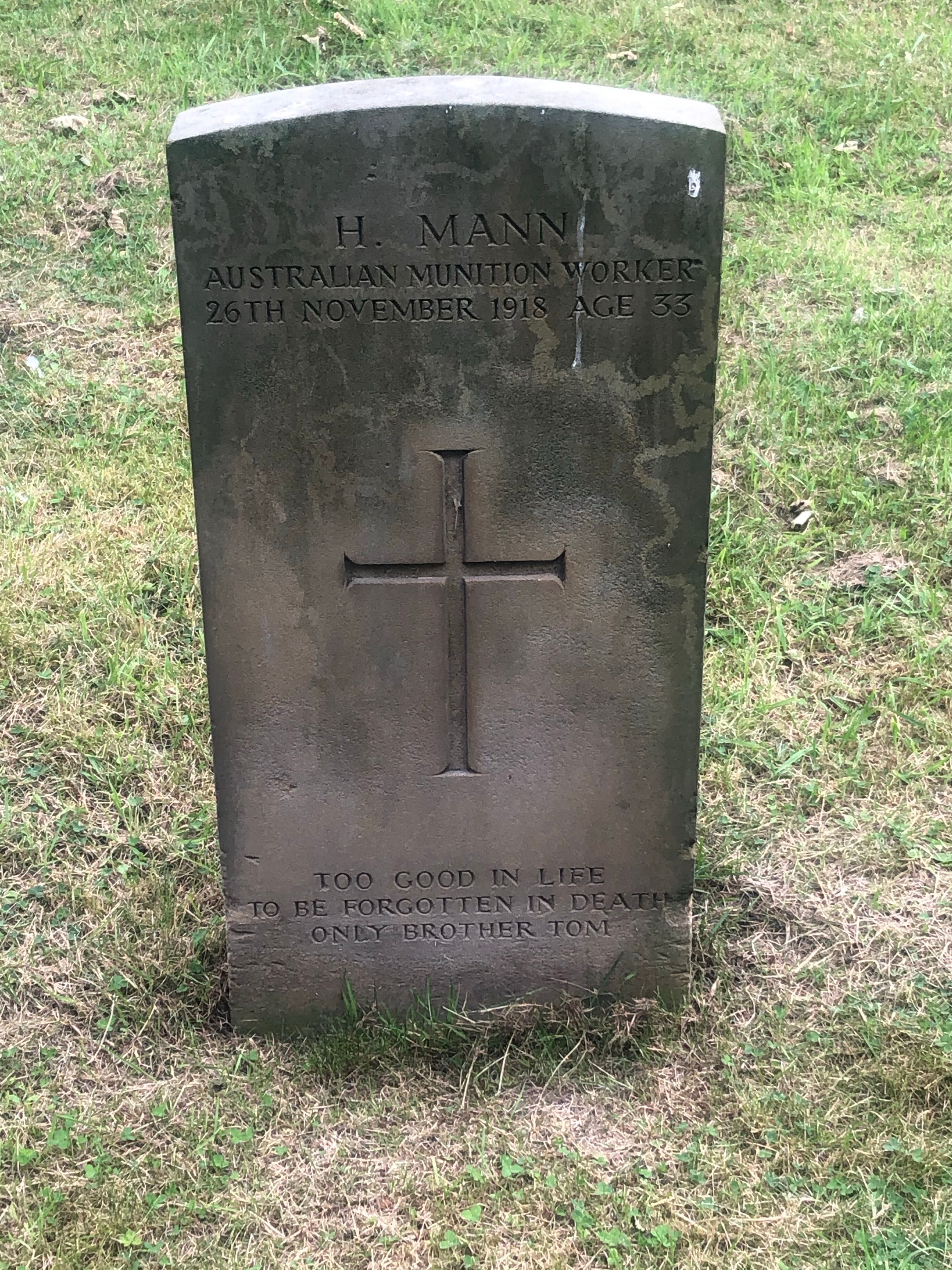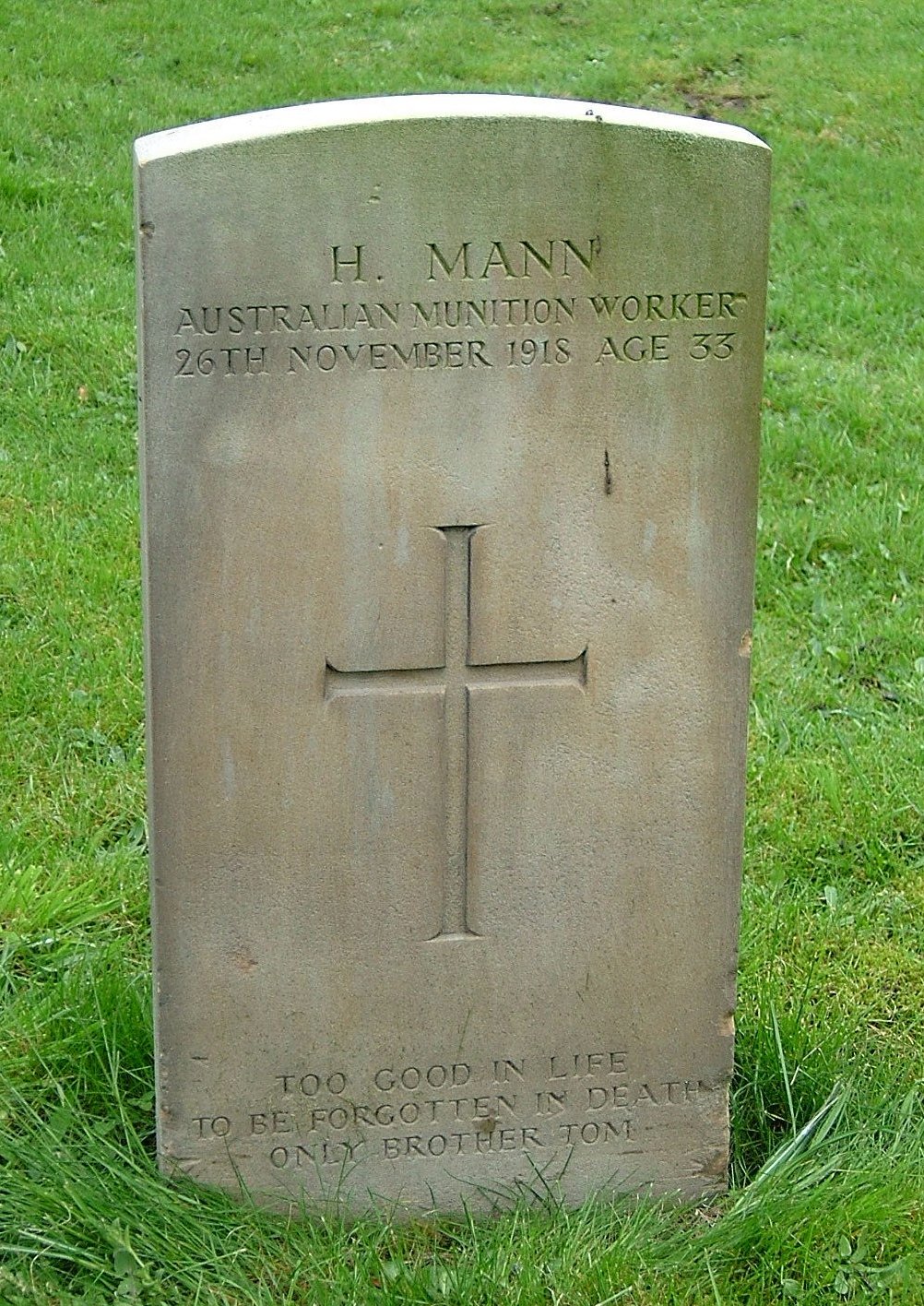He was 32/33,and the son of the late Henry and Catherine Mann.
Deaths Dec 1918 Mann Henry 32 Tynemouth 10b 413
The British Government requested skilled workers for munitions work from the Dominions and Colonies to make up the shortages caused by military service in this country
Australian War Memorial's Research Centre does not hold files relating to munitions workers and other skilled workers sent to the United Kingdom during the First World War. The National Archives of Australia has the service records for these men in the series MT1139/1 which consists of personnel dossiers for men enlisted under a joint Australian Commonwealth - Imperial Government scheme for providing skilled Australian workers to British war industries during the First World War. Under this scheme the volunteers would receive free passage to Great Britain, an allowance for travel time, a special allowance for the duration of service, and eventual repatriation to Australia. Married men also received a separation allowance, but were required to allot a portion of all their earnings to dependants. The men were expected to work in whatever industries they were directed to by the British Board of Trade, and under the prevailing conditions and wages for the duration of hostilities.
Government newspaper adverts appeared in August 1916, and the first party of 76 workers departed Australia in September. Groups continued to be recruited and sent at intervals, with the eventual number of workers under the scheme totalling just over 5,000. Almost 1,000 of these had already been working in Britain under private agreements with large firms such as Vickers, and were brought under the conditions of the scheme. An additional 200 former AIF soldiers were also recruited in Britain. Initially only skilled workers were sought, however at the request of the British Government later groups included large numbers of navvies for general labouring.
These men were not members of the Australian Imperial Forces and did not serve in combat units, but were recruited to meet the shortfall in skilled labour that threatened many of Britain's key wartime industries including munitions.
At the insistence of the Australian Government, Australian War Workers/Munition Workers are commemorated by The Commonwealth War Graves Commission; workers of other nationalities are not.
He was 32/33,and the son of the late Henry and Catherine Mann.
Deaths Dec 1918 Mann Henry 32 Tynemouth 10b 413
The British Government requested skilled workers for munitions work from the Dominions and Colonies to make up the shortages caused by military service in this country
Australian War Memorial's Research Centre does not hold files relating to munitions workers and other skilled workers sent to the United Kingdom during the First World War. The National Archives of Australia has the service records for these men in the series MT1139/1 which consists of personnel dossiers for men enlisted under a joint Australian Commonwealth - Imperial Government scheme for providing skilled Australian workers to British war industries during the First World War. Under this scheme the volunteers would receive free passage to Great Britain, an allowance for travel time, a special allowance for the duration of service, and eventual repatriation to Australia. Married men also received a separation allowance, but were required to allot a portion of all their earnings to dependants. The men were expected to work in whatever industries they were directed to by the British Board of Trade, and under the prevailing conditions and wages for the duration of hostilities.
Government newspaper adverts appeared in August 1916, and the first party of 76 workers departed Australia in September. Groups continued to be recruited and sent at intervals, with the eventual number of workers under the scheme totalling just over 5,000. Almost 1,000 of these had already been working in Britain under private agreements with large firms such as Vickers, and were brought under the conditions of the scheme. An additional 200 former AIF soldiers were also recruited in Britain. Initially only skilled workers were sought, however at the request of the British Government later groups included large numbers of navvies for general labouring.
These men were not members of the Australian Imperial Forces and did not serve in combat units, but were recruited to meet the shortfall in skilled labour that threatened many of Britain's key wartime industries including munitions.
At the insistence of the Australian Government, Australian War Workers/Munition Workers are commemorated by The Commonwealth War Graves Commission; workers of other nationalities are not.
Sponsored by Ancestry
Advertisement
Records on Ancestry
Advertisement





